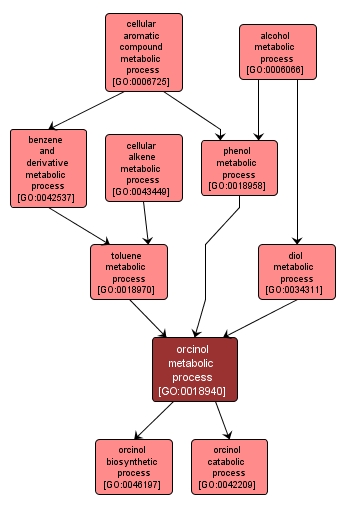GO TERM SUMMARY
|
| Name: |
orcinol metabolic process |
| Acc: |
GO:0018940 |
| Aspect: |
Biological Process |
| Desc: |
The chemical reactions and pathways involving orcinol (5-methyl-1,3-benzenediol), an aromatic compound derived from the fermentation of lichen, and synthesized, probably as a fungicide, by some higher plants. |
Synonyms:
- orcin metabolism
- orcinol metabolism
- orcin metabolic process
|
|

|
INTERACTIVE GO GRAPH
|














